The Old Nyali Bridge
On 8 Aug 1931 Mombasa stopped work. The Governor of Kenya was poised to open a new bridge linking Mombasa island to the north mainland, and everyone wanted to be there. The Governor arrived in a motorcade and in his formal speech opening the bridge he said: “The whole scheme by the company Nyali Ltd., in which this fine bridge plays but a part, indicates your belief in the future of Mombasa and in the future of Kenya. I do heartily admire your determination to carry on, in spite of the depression, so as to be ready to take advantage of the tide of prosperity when it begins to rise again, as it surely will.” It had been risky to build the bridge because there was not one hotel north of Mombasa, not one house on the beaches of Nyali, Bamburi, Shanzu or Kikambala. Tsetse flies infested the bush which covered the coast. All that was on the north mainland was two sisal plantations and a coconut estate. The rest was wild sisal and lantana traversed by buffalo, bush pig, leopard and the occasional lion. But Nyali Ltd. proposed the development of 2,500 acres as a housing estate.
The new bridge needed 4,000 tons of steel and more than a million rivets. It was 1,300 feet long (the longest pontoon bridge in the world, it was claimed) and had 14 spans, the pontoons of which were retained in position by massive chains and 32 anchors varying in weight from 2-½ to four tons and laid to a depth of 180 feet. The deck was thick wooden planks. Who can remember the loud rattling of the joints as vehicles crossed them, and the sharp, switchback rise and fall of the different sections in spring tides? The bridge was high enough for vessels to pass beneath. In order to recoup its cost, it charged tolls.
The bridge enabled the development of beach hotels north of Mombasa and the building of schools of houses on the south mainland. At the end of the 1970s construction of a new, modern bridge commenced. The old pontoon bridge was dismantled and replaced by a beam bridge. The new bridge was completed in 1981. Approximately 390 meters long and 26 meters wide, it is divided into six lanes.
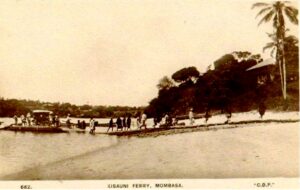
Before the bridge was built.
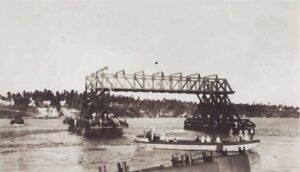
Starting the construction.
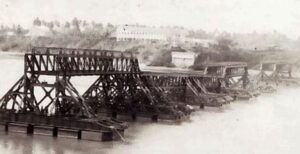
Progress of construction.
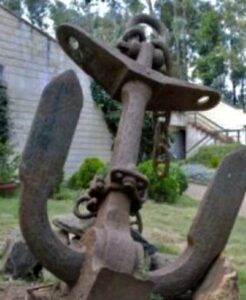
One of the anchors tethering the bridge to the seabed.
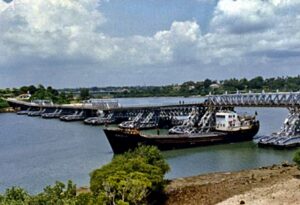
Nyali Bridge opens.
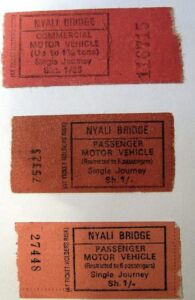
Vehicle tickets to cross the Nyali Bridge. 1/- for cars.1/25 for commercial vehicles.
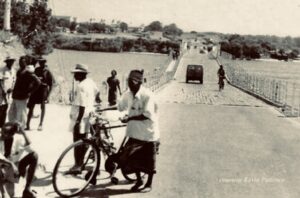
Cyclist after crossing the Nyali Bridge.
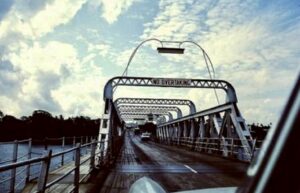
Guard rails were added to the two-lane pontoon bridge.
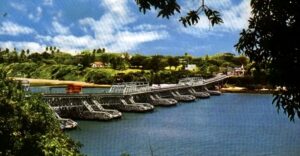
Nyali Bridge with the pontoons clearly visible.
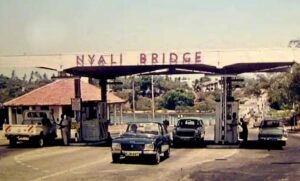
The Nyali Bridge ticket station.
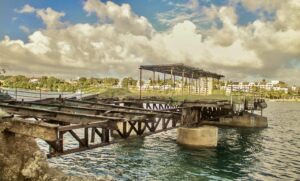
Dismantling the old bridge.
www.christinenicholls.co.uk https://www.europeansineastafrica.co.uk

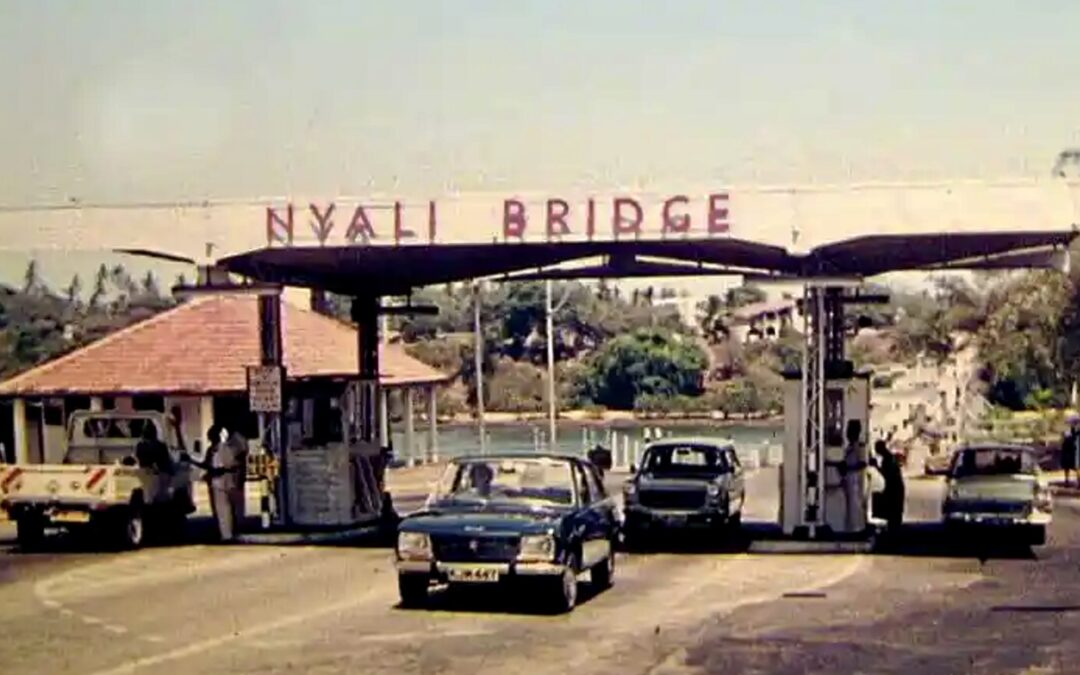
Recent Comments